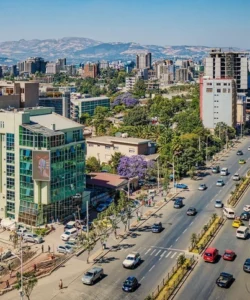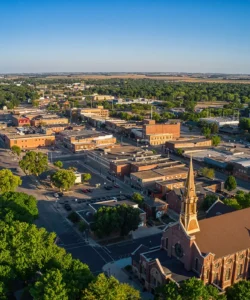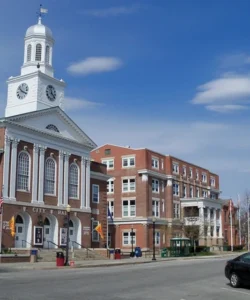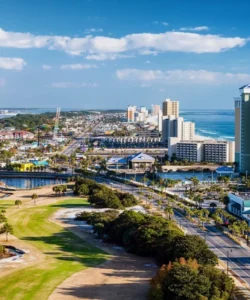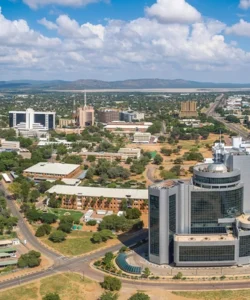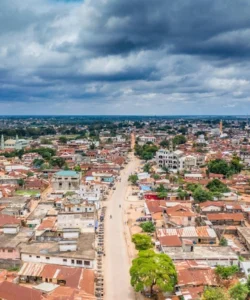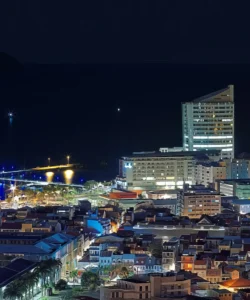Belgium is a captivating country in Western Europe, renowned for its medieval towns, Renaissance architecture, and its position as the de facto capital of the European Union.
Listen to an introduction about Belgium
![]()
Area and Population:
Belgium has a total area of approximately 30,688 km² (11,849 sq mi). As of January 1, 2025, its population is estimated to be around 11,825,551 inhabitants.
Capital:
The capital city of Belgium is Brussels.
Major Cities:
Besides Brussels, other significant cities include Antwerp, Ghent, Charleroi, and Liège.
Language:
Belgium is a trilingual country with three official languages:
- Dutch: Spoken predominantly in the northern region of Flanders.
- French: Spoken primarily in the southern region of Wallonia.
- German: Spoken by a small community in the eastern part of Wallonia.
Brussels is officially bilingual (French and Dutch), although French is the most widely spoken language there.
Currency:
As a founding member of the European Union, Belgium uses the Euro (€) as its official currency.
Religion:
The dominant religion in Belgium is Roman Catholicism, with over half of the population identifying as such. There is also a significant portion of the population identifying as non-believers/agnostics or atheists. Islam is the second largest religion, particularly in Brussels and Antwerp. The government officially recognizes Roman Catholicism, Protestantism, Anglicanism, Orthodox Christianity, Judaism, Islam, and secular humanism.
Attractions and Wonders:
- Grand Place (Grote Markt), Brussels: A UNESCO World Heritage site, considered one of the most beautiful squares in Europe, surrounded by opulent guildhalls and the stunning Town Hall.
- Atomium, Brussels: An iconic modernist building constructed for Expo 58, offering panoramic views and exhibitions.
- Manneken Pis, Brussels: A small, famous bronze fountain sculpture, a quirky symbol of Brussels.
- Bruges Canals and Historic Centre: Often called the “Venice of the North,” Bruges is a well-preserved medieval city with picturesque canals, cobblestone streets, and charming architecture, also a UNESCO World Heritage site. Key attractions include the Markt (Market Square) and the Belfry of Bruges.
- Ghent’s Gravensteen Castle (Castle of the Counts): A formidable medieval castle in the heart of Ghent, offering a glimpse into the city’s past.
- Saint Bavo’s Cathedral, Ghent: Home to the famous Ghent Altarpiece by the Van Eyck brothers.
- Antwerp Central Station: Often hailed as one of the most beautiful railway stations in the world, a stunning architectural masterpiece.
- Antwerp Cathedral of Our Lady: A magnificent Gothic cathedral with works by Rubens.
- Royal Museums of Fine Arts of Belgium, Brussels: Houses extensive collections of Belgian and European art.
- In Flanders Fields Museum, Ypres: A poignant museum dedicated to World War I history.
- Waterloo Battlefield: The site of Napoleon’s final defeat.
- Hallerbos (Blue Forest): A magical forest near Brussels, famous for its carpet of bluebells in spring.
Architecture:
Belgium boasts a rich and varied architectural history, marked by distinct regional styles and influential movements:
- Gothic: Flourished in medieval cities like Brussels, Bruges, and Ghent, evident in cathedrals, belfries, and guildhalls. The Brabantine Gothic style is particularly notable.
- Renaissance and Baroque: Seen in the opulent guildhalls of the Grand Place in Brussels and numerous historic buildings across the country.
- Art Nouveau: Brussels was a birthplace and major center of the Art Nouveau movement in the late 19th century, with influential architects like Victor Horta (e.g., Horta Museum, Tassel House) creating organic, flowing designs using iron, glass, and intricate ornamentation.
- Art Deco: Followed Art Nouveau, simplifying lines and focusing on elegant forms, also prominent in Brussels.
- Traditional Flemish Architecture: Characterized by brick facades, stepped gables, and decorative elements, especially visible in the historic centers of Bruges and Ghent.
- Modern and Contemporary: Reflecting its role in international organizations, Brussels also features contemporary and sometimes brutalist architecture.
Roads:
Belgium has a highly developed and dense road network, making travel throughout the country and to neighboring European nations very efficient.
- Motorways (Autoroutes/Autosnelwegen): An extensive system of well-maintained motorways connects major cities and provides crucial links to France, Germany, the Netherlands, and Luxembourg. These are marked with “A” and “E” (European) numbers.
- National and Regional Roads: A comprehensive secondary network of well-maintained national (N-roads) and regional roads complements the motorway system.
- Ring Roads (R-roads): Major cities often have orbital ring roads to manage traffic flow.
- Regional Management: The road network is managed by the regional authorities (Flanders, Wallonia, and Brussels-Capital Region), which means road signs are in Dutch in Flanders, French in Wallonia, and bilingual in Brussels.
Belgian roads are known for their quality, though certain sections, particularly in Wallonia, have faced criticism for maintenance in the past.
Hotels:
Belgium offers a wide array of accommodation options to suit every budget and preference, from luxurious stays to charming local inns.
- Luxury Hotels: Concentrated in Brussels, Bruges, and Antwerp, featuring international chains (e.g., Hilton, Radisson, Marriot) and historic grand hotels.
- Boutique Hotels: Numerous charming and stylish boutique hotels can be found in historic city centers, especially in Bruges and Ghent.
- Mid-Range and Budget Hotels: A good selection of affordable hotels and guesthouses is available throughout the country.
- B&Bs and Holiday Rentals: Popular choices for a more personalized and local experience, particularly in rural areas or smaller towns.
Restaurants and Cuisine:
Belgian cuisine is hearty, flavorful, and often described as “French quality in German quantities.” It’s characterized by its regional diversity and a strong emphasis on fresh, local ingredients.
- Mussels and Fries (Moules Frites): Considered the national dish. Mussels are typically steamed with white wine, herbs, and vegetables, served with a generous portion of crispy, thick-cut fries.
- Fries (Frites/Frieten): Belgian fries are legendary, double-fried for extra crispiness, and traditionally served with a wide variety of sauces (mayonnaise is the most popular).
- Waffles: Belgium is famous for two main types:
- Brussels Waffles (Gaufres de Bruxelles): Rectangular, light, and crispy, often served with powdered sugar, whipped cream, or fruit.
- Liège Waffles (Gaufres de Liège): Denser, chewier, and sweeter, with irregular edges and caramelized pearl sugar throughout. Often eaten plain or as street food.
- Chocolate: Belgian chocolate is world-renowned for its high quality, rich flavor, and meticulous craftsmanship. Brands like Godiva, Neuhaus (inventors of the praline), Leonidas, and Côte d’Or are famous. Pralines (filled chocolates) and truffles are signature products.
- Beer: Belgium boasts an incredibly rich and diverse beer culture, with thousands of different beers, including Trappist ales, Lambics, Sours, and strong golden ales. Beer is often integrated into cooking.
- Carbonnade Flamande (Stoemp or Stoverij): A rich beef stew braised in Belgian beer, often with onions, mustard, and spices, served with fries.
- Waterzooi: A creamy stew from Ghent, traditionally made with fish but now often prepared with chicken and vegetables.
- Chicons au Gratin (Endives with Ham and Cheese Sauce): Braised Belgian endives wrapped in ham and baked in a creamy béchamel sauce with cheese.
- Tomates aux Crevettes: Tomatoes stuffed with a creamy mixture of small North Sea gray shrimp and mayonnaise.
- Speculoos: A spiced shortbread biscuit, particularly popular around St. Nicholas Day.
- Vol-au-vent: A puff pastry case filled with chicken, meatballs, and mushrooms in a creamy sauce.
Dining experiences range from casual “friteries” (fry stands) and cozy brasseries to Michelin-starred restaurants, offering a culinary journey for every palate.




